OddCameras.com Lubitel 166+ Lomography
The Lubitel 166+ is a Twin Lens Reflex
6x6 camera, made for Lomography, production began in 2008. It is a relaunch based on the 166 Universal with additional features.
To give an idea of the whole series of the GOMZ/LOMO cameras in historical order:
-Komsomolets 1946-1951, predecessor of the Lubitel. Unlike the Lubitel,
it has a non-focussing viewfinder. It is a close copy of the
Voigtländer Brillant. 300.000 were made.
-Lubitel TLR 1950-1956, focussing finder like the Voigtländer Brillant S. 1.300.000 were made.
-Lubitel-2 1955-1977, improved version. 2.200.000 were made.
-Lubitel-166 1977-1980, so-called Olympic version, much improved (auto
film advance, hot shoe, new housing). Quality problems. Only 69.000
were made.
-Lubitel-166 B 1980-1990, downgraded version, no hot shoe, no counter and automatic film advance. 900.000 were made.
-Lubitel-166 Universal 1983-1996 (end of production), A 4.5x6 mask was added, 400.000 were made.
-Lubitel-166+ 2008-?, relaunch based on the 166 universal (manufactured for Lomographic Society).
The camera presented is a Lubitel
166+. As the Universal it can shoot 6x6 and 4.5x6 format. Lomography
added the capability to shoot 35mm. Obviously they were inspired by the
Rolleikin system and called it Lubikin. They added a film counter to
the camera, for 35mm only, as it is driven by the film sprockets and
they added a rewind. The camera has a removable back and screen
housing, the manual says that Lomography had planned extensions to the
camera. They have not been made, the camera was quite expensive; it is
still listed in 2023, but not available. The camera has a hot shoe like
the Olympic model. It can focus much closer than the original ones, 0.8m
instead of 1.4m.
Lenses:
Taking lens: LOMO T-22 1:4.5 f=75mm, coated
Viewing lens: unnamed,
Shutter: leaf, 1/15 to 1/250s, diaphragms 4.5 to 22.
Some pictures:
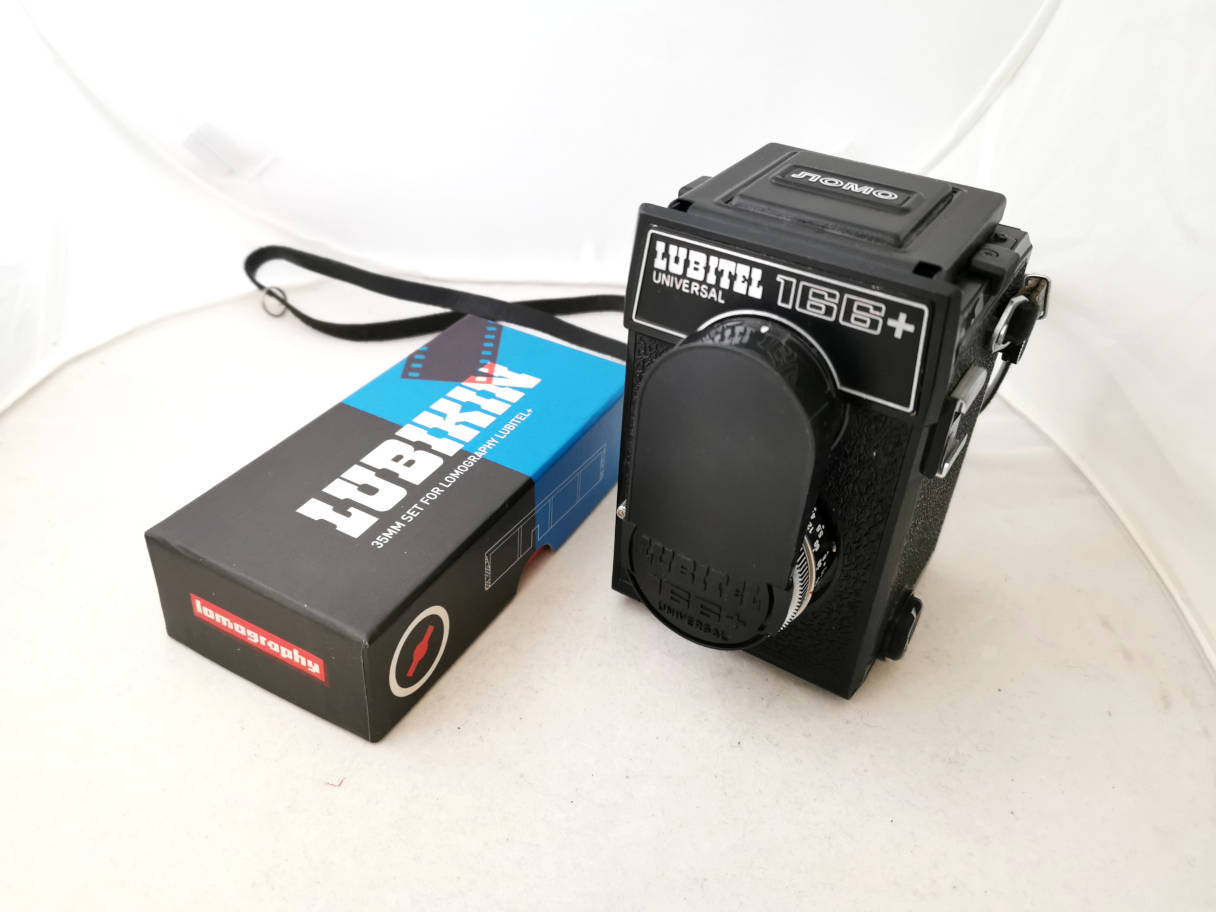
Camera with double cap, strap and Lubikin set..
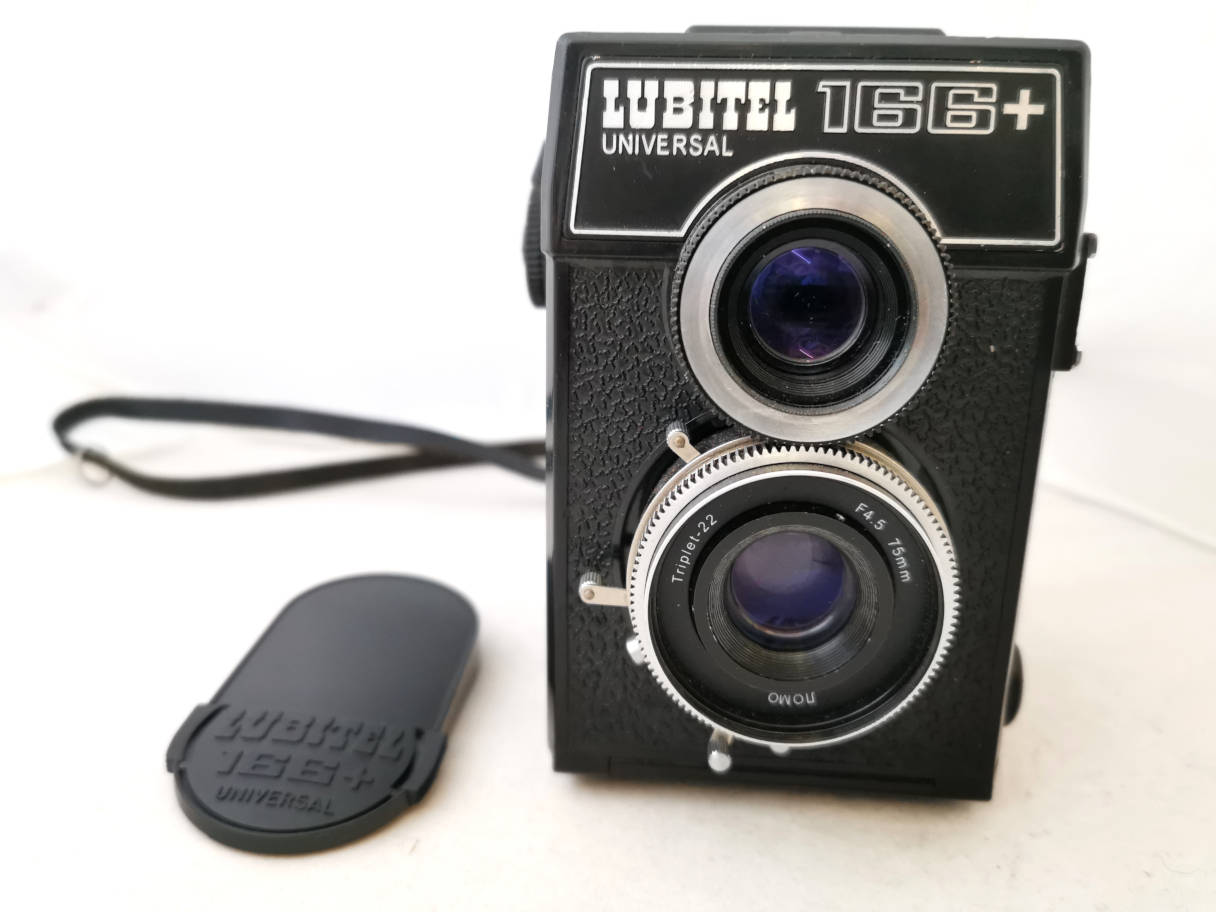
Camera
front.
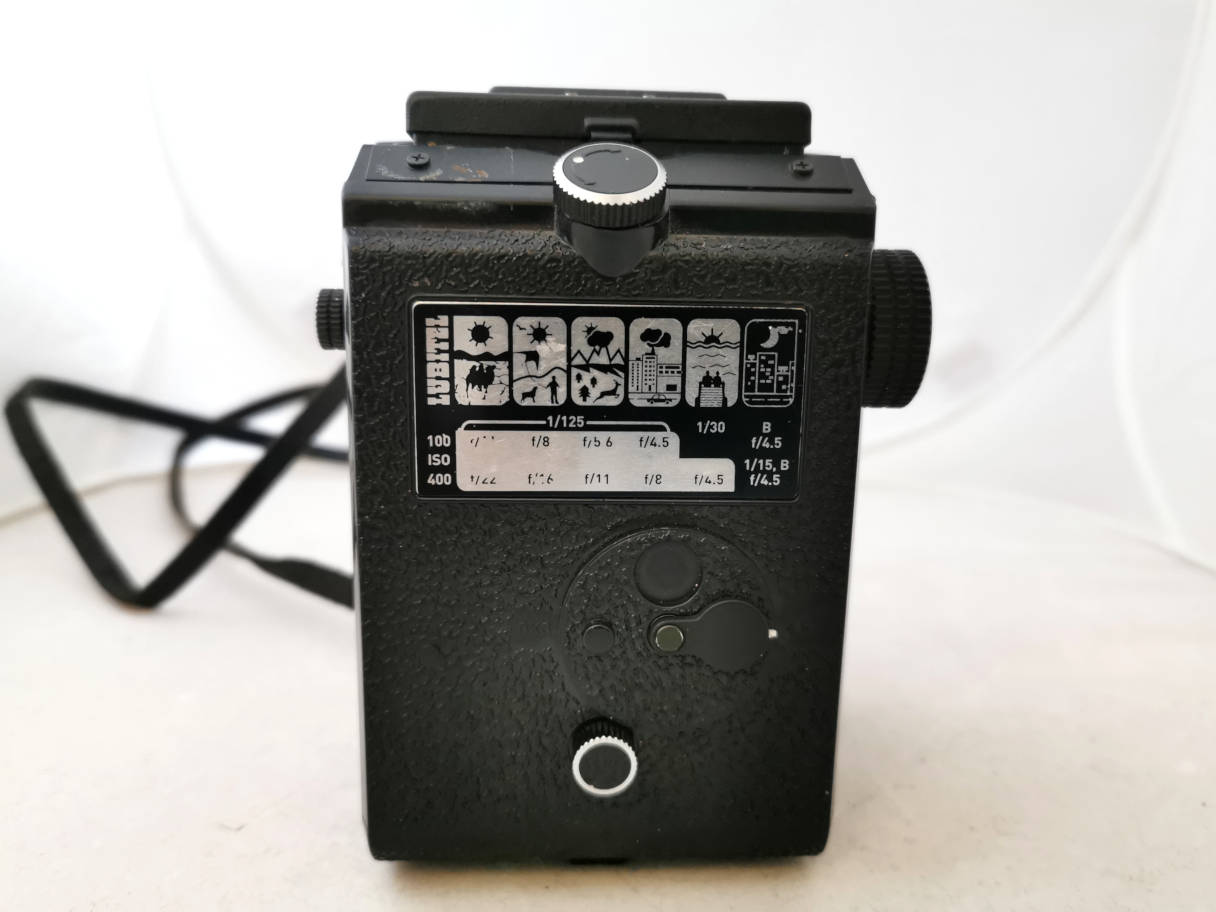
Camera
back. Near the top: opening button. Exposure table, a rough guide in
case of. Rotating red window for both roll film formats. The little
knob under the device obstructs the red window when roll film is in
use. This is not light-tight enough for 135 film, which has no backing paper.
So they added a rubber plug to close the red window completely.
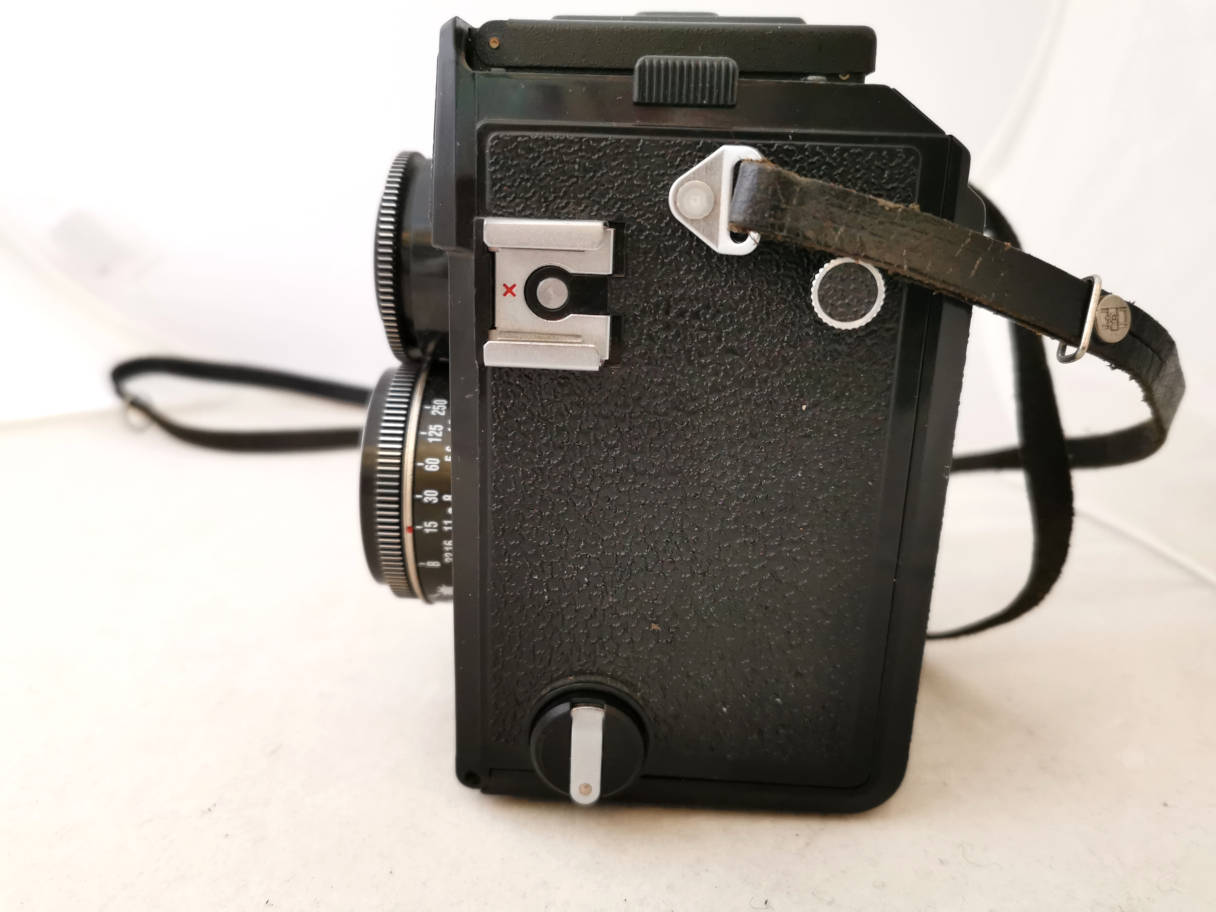
Camera right side. Hot shoe, one peg and a rewind handle.
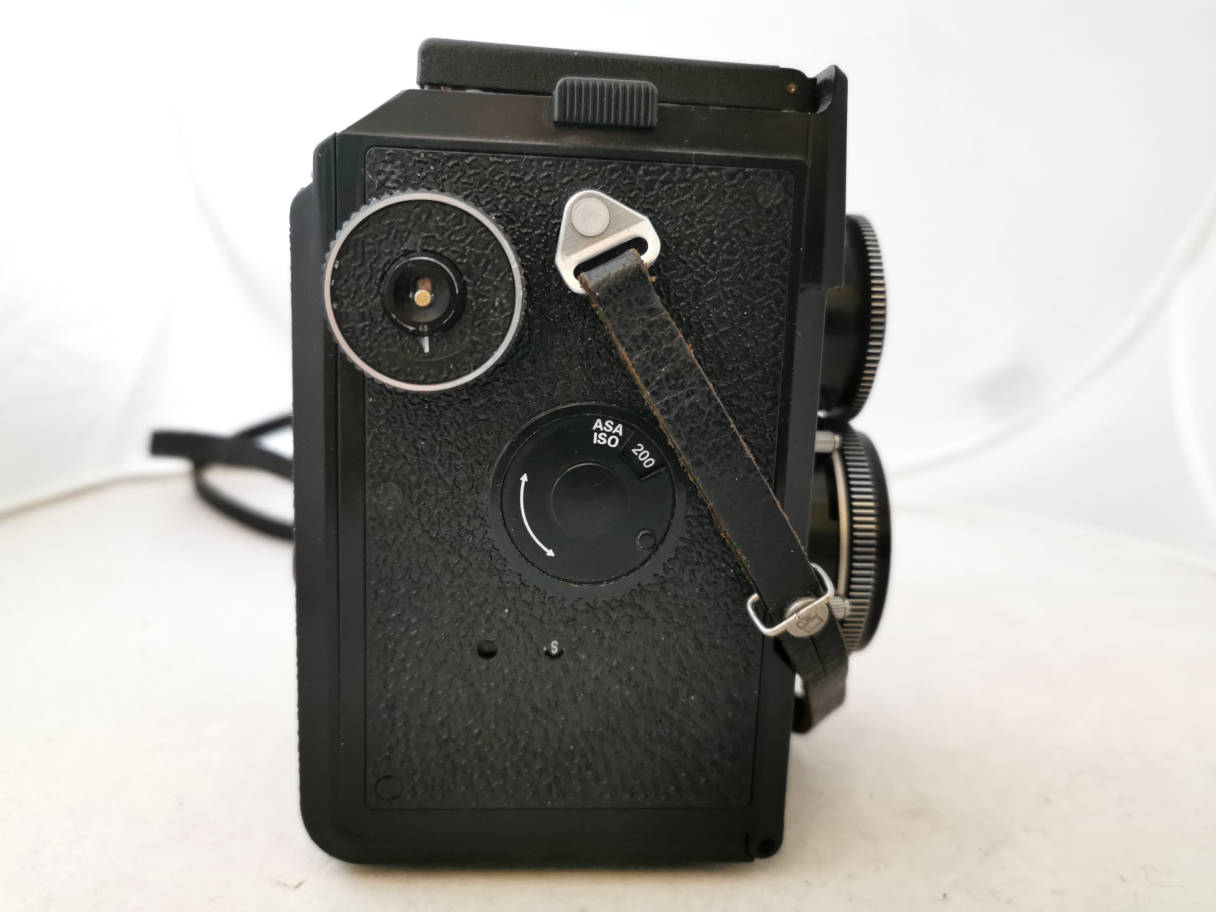
Camera
left side. Wind knob, 135 film counter and ISO reminder. There are 2
tiny, tiny counter windows. One indicates the tiny numbers, the other
has a white dot passing one time per photo. So you know you have
advanced one photo if the dot shows again, there are no stops.
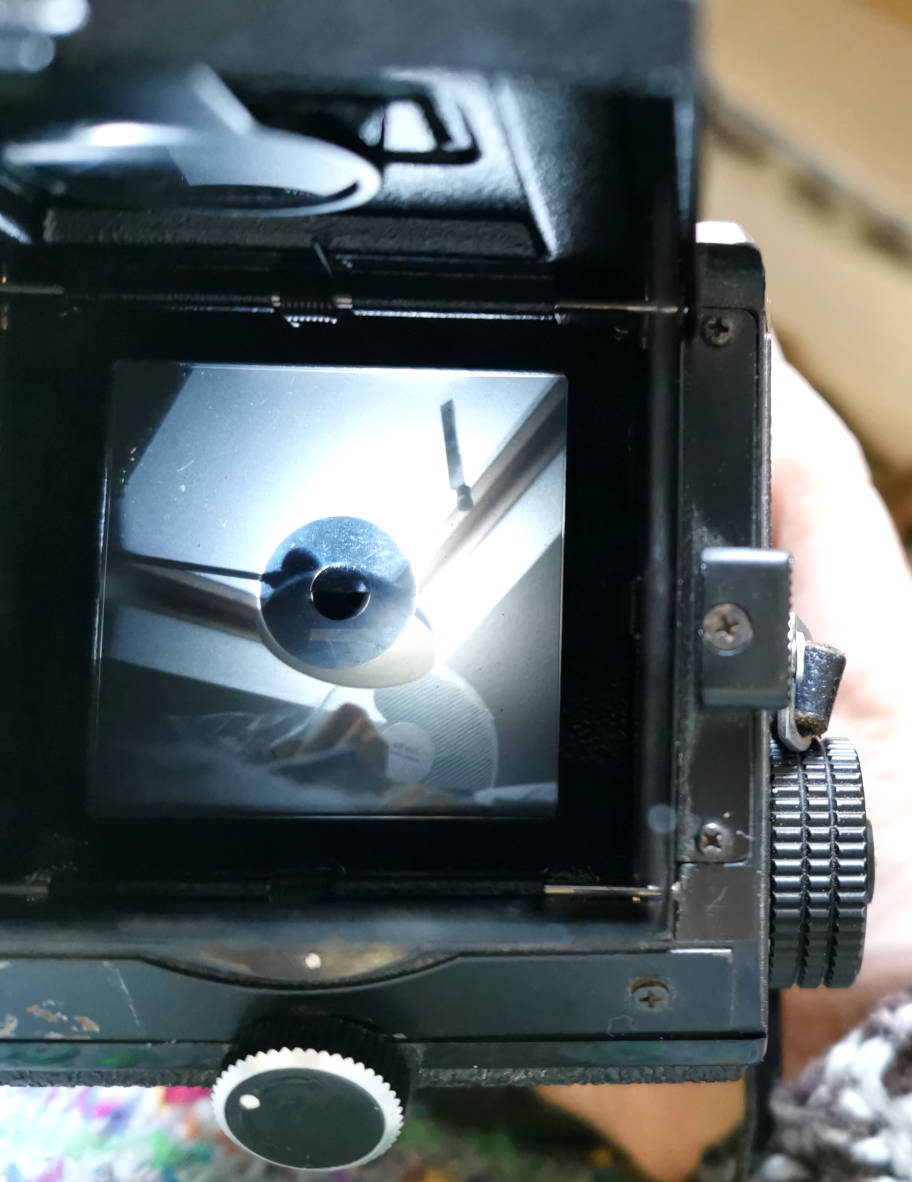
Luminous screen with focussing area and split screen area as well.
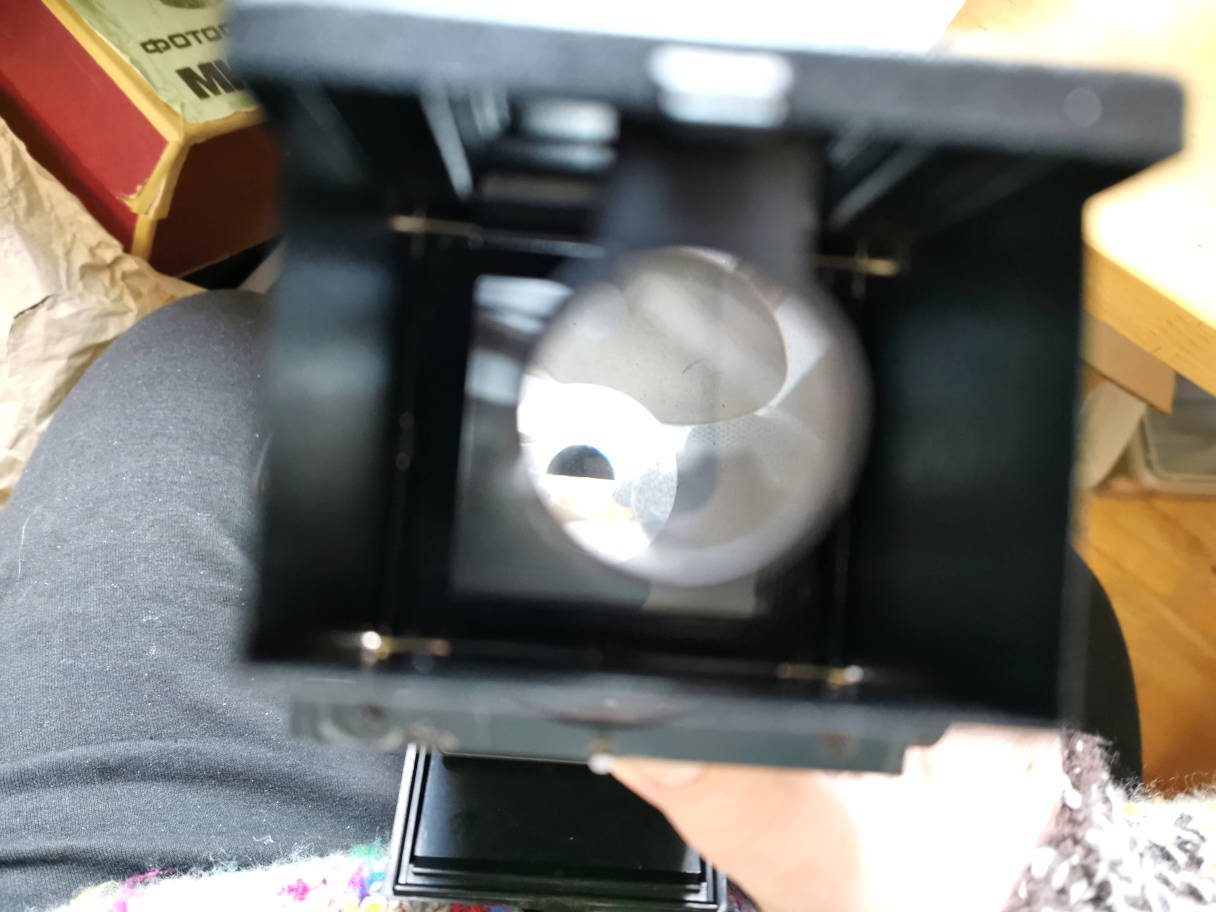
A loupe is provided.
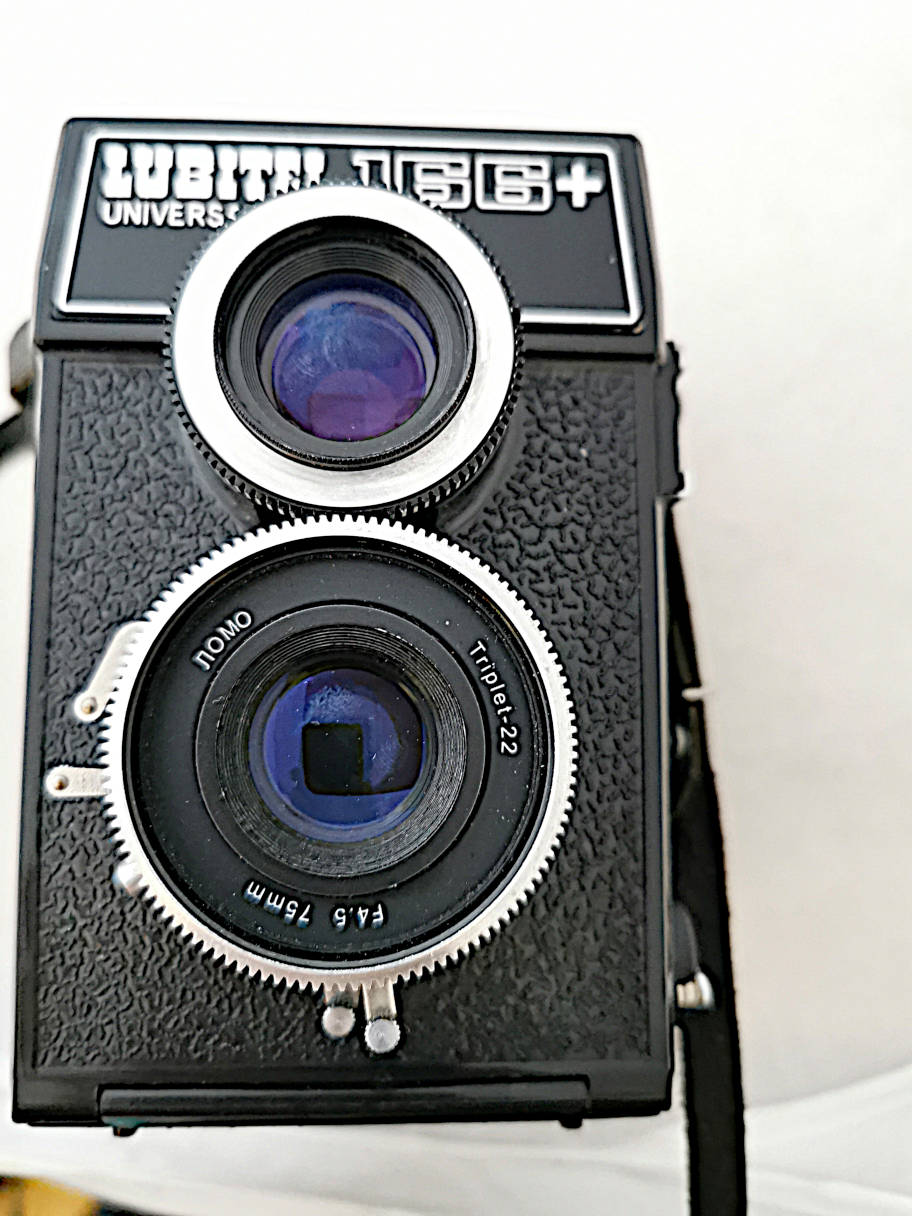
Lenses. To the left of the taking lens: shutter cocking lever in cocked
position and shutter release lever. under the lens: speed and aperture
levers.
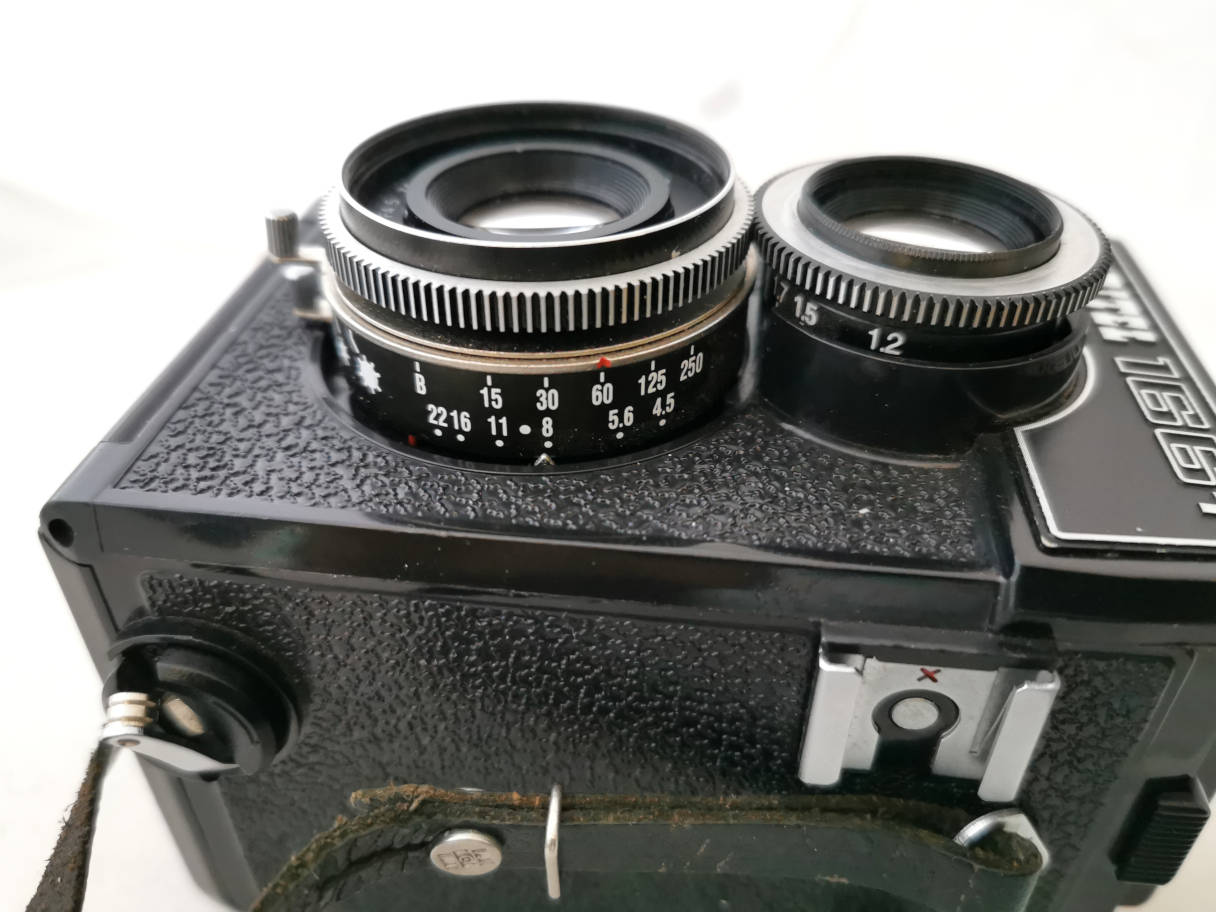
Speeds and apertures. The speed lever itself points to the weather
symbols at the bottom of the lens which are the same as on the table on
the camera back.
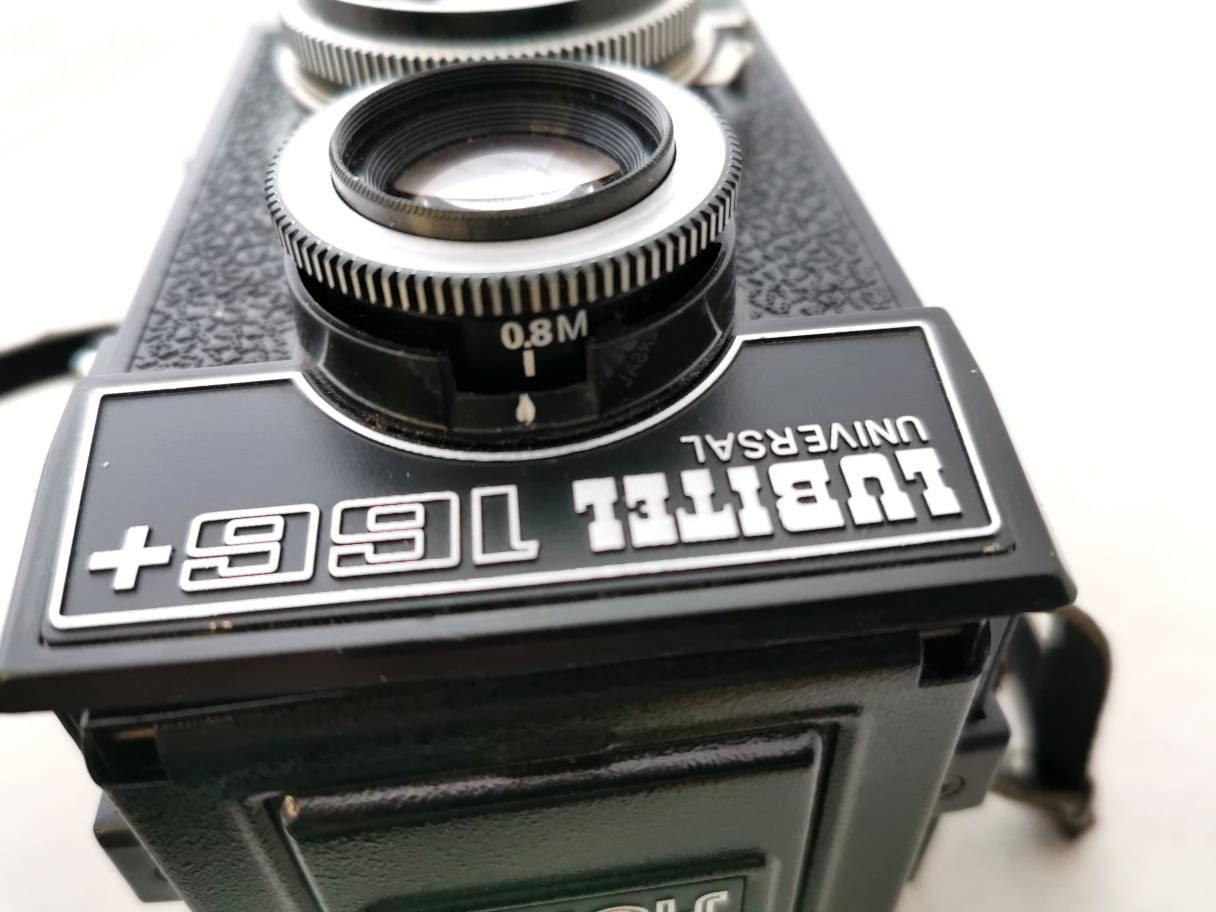
The lens focusses down to 0.8m. It has click-stops at infinity, 3m, 1.5m and 0.8m, quita handy in the dark.
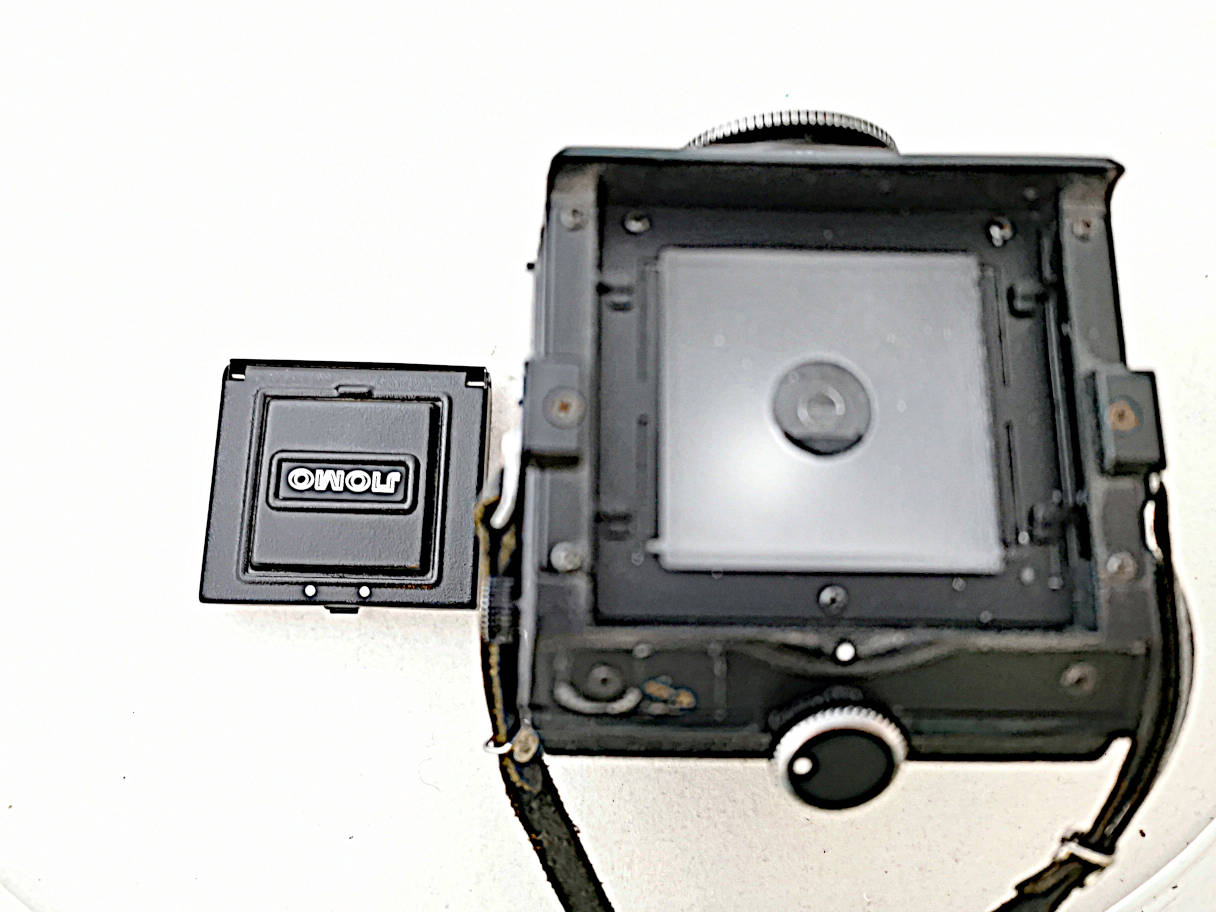
The focussing screen hood is easily detachable via 2 sliders.
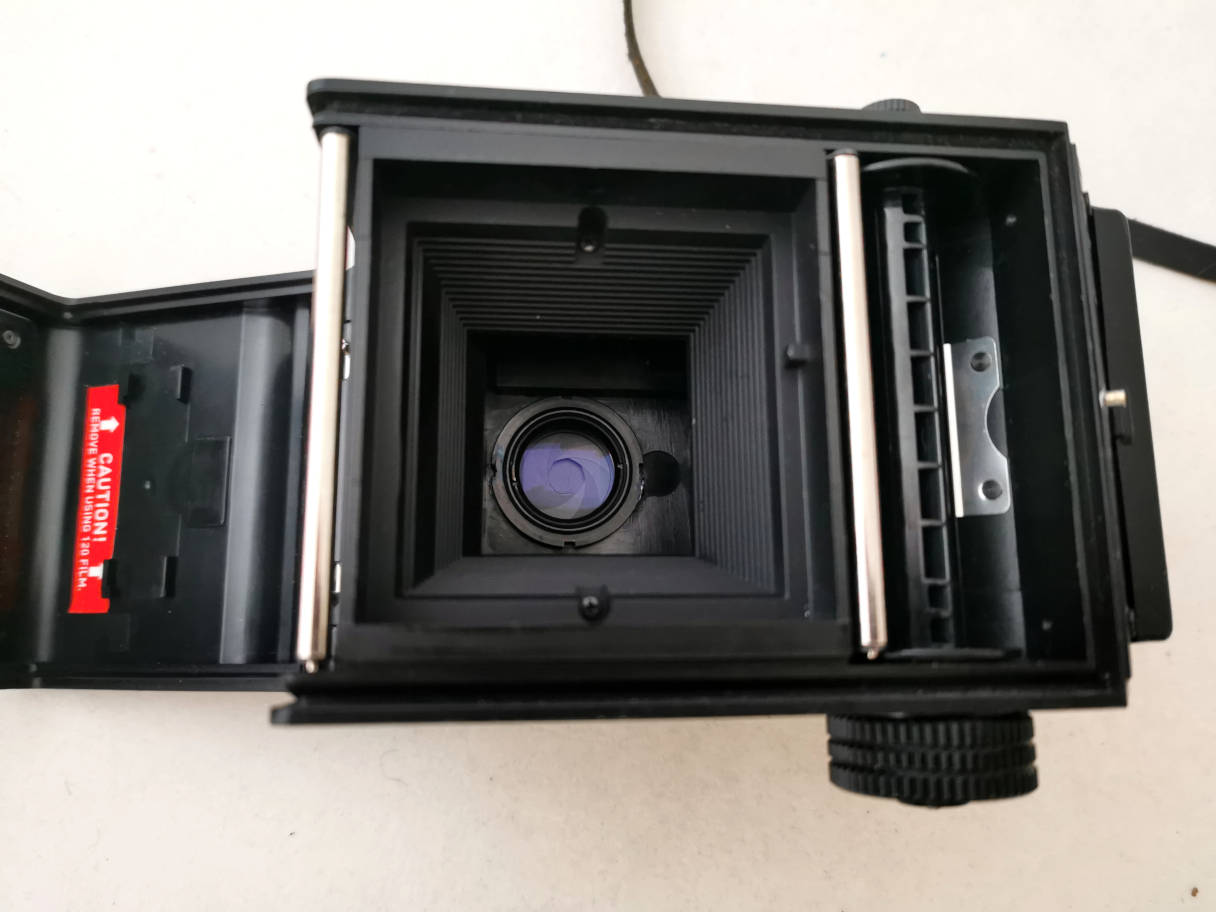
Camera back open. Film wind chamber.
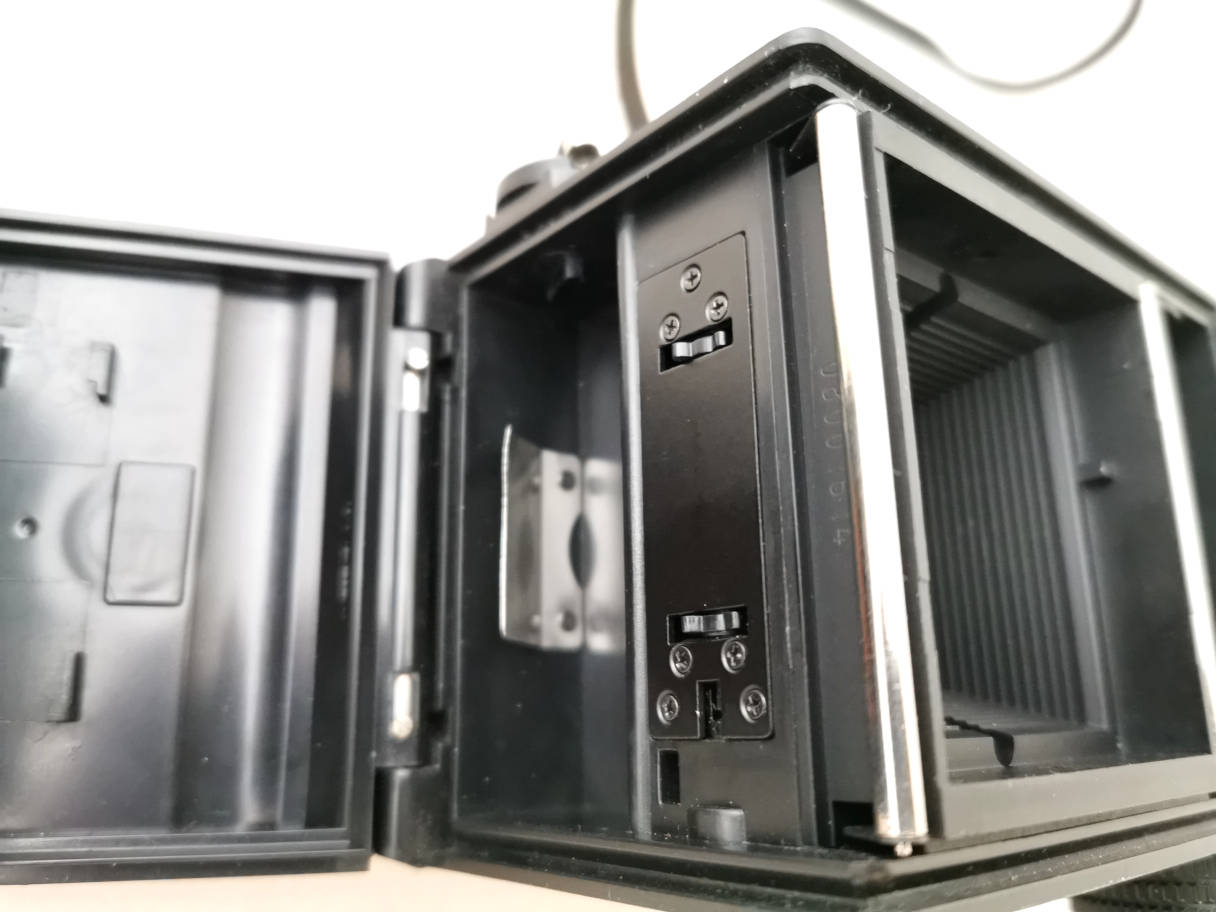
Film spool chamber.
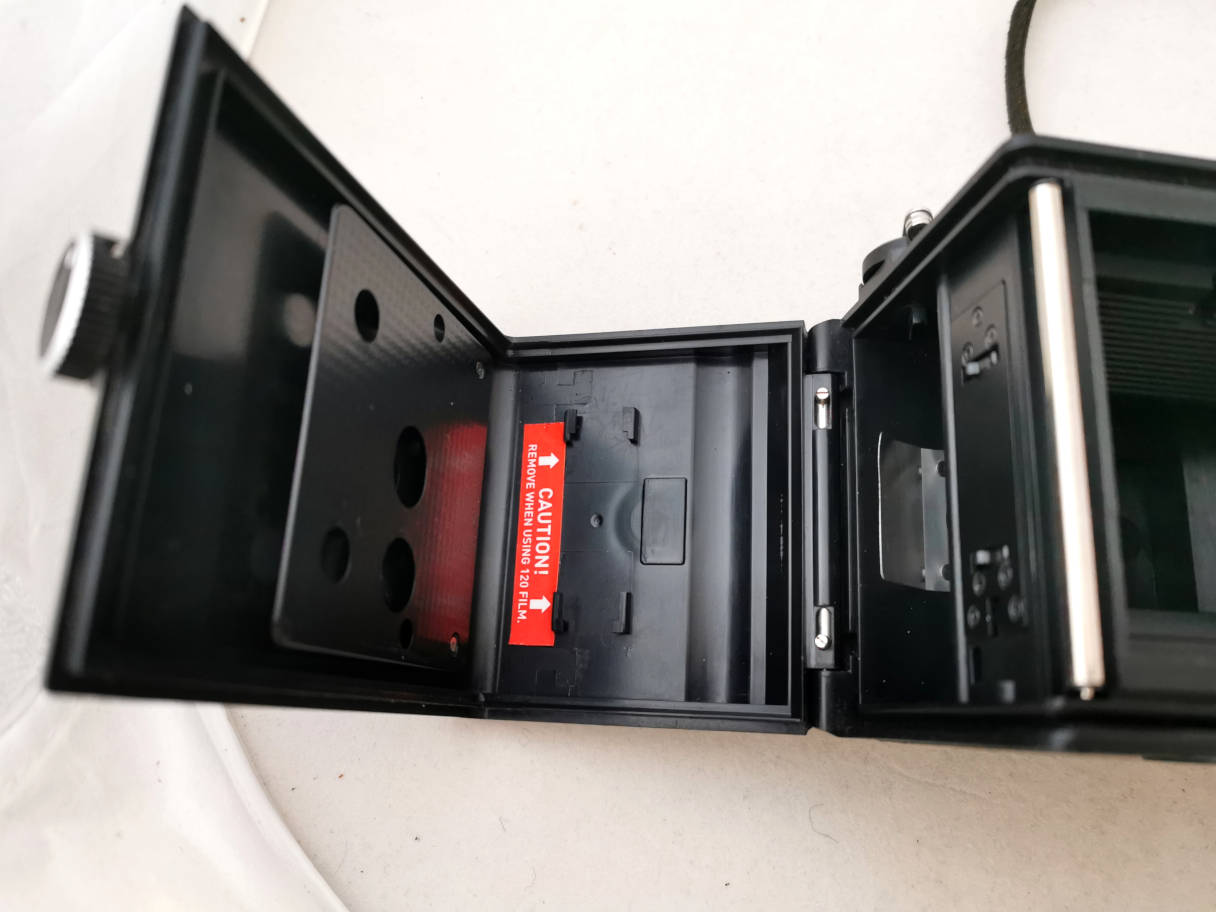
The back flap is detachable.

The
Lubikin set: a supply spool to put the film cartridge, a wind spool, a
frame (which lets the sprockets exposed), a pressure plate for the
counter gearing and a tranparent indicator for the viewing screen. The
other 2 frames were provided with the camera.
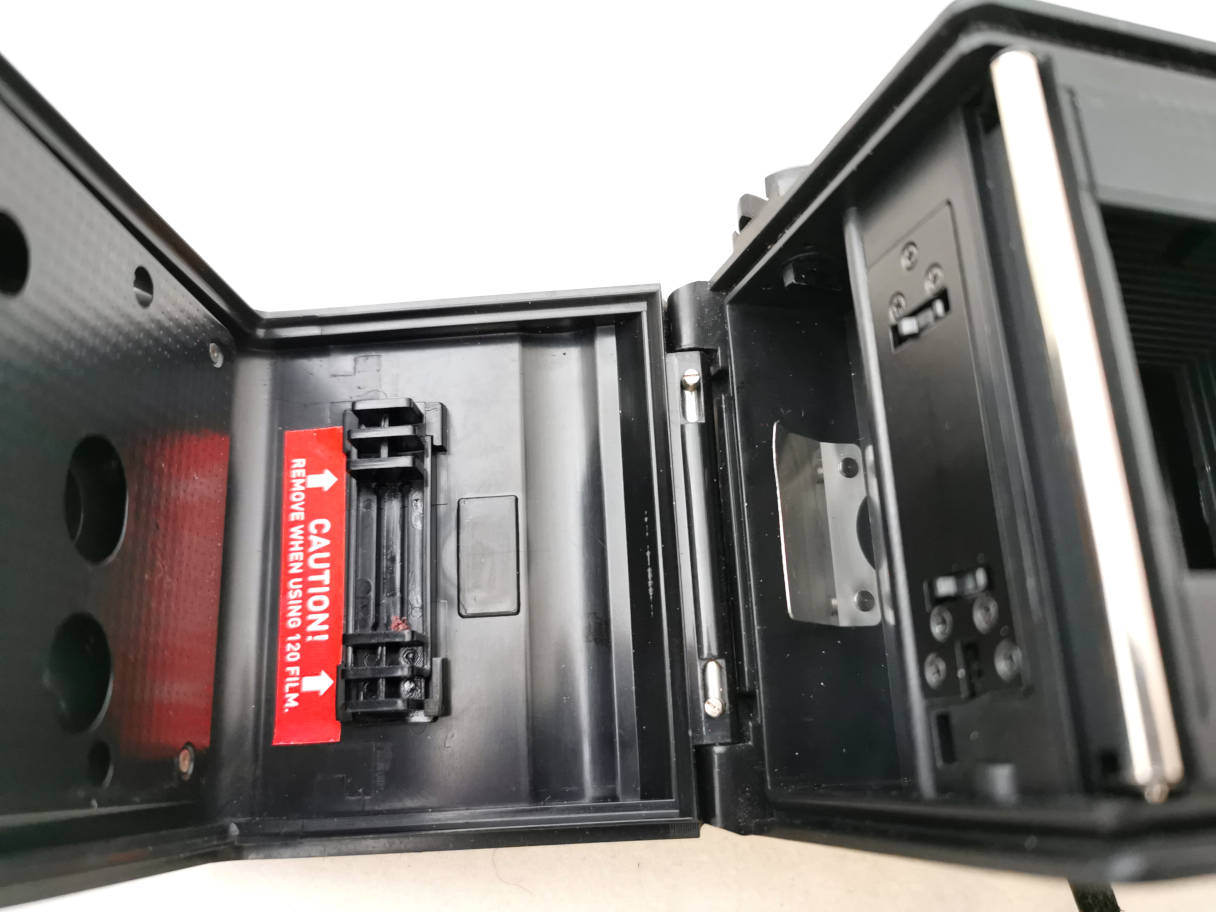
Counter pressure plate installed, it clicks into place. Do not forget to take it out for roll film, it would ruin the film.
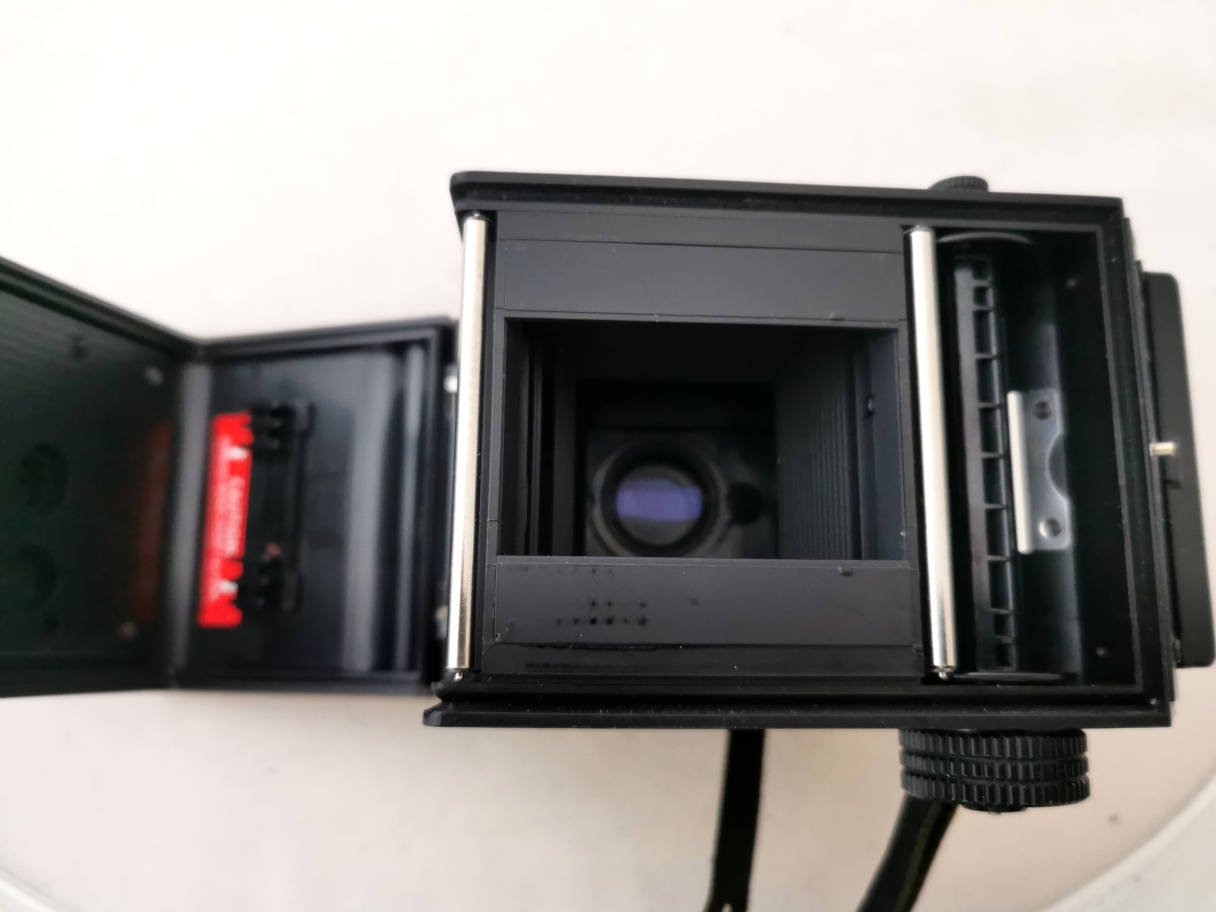
Mask installed.
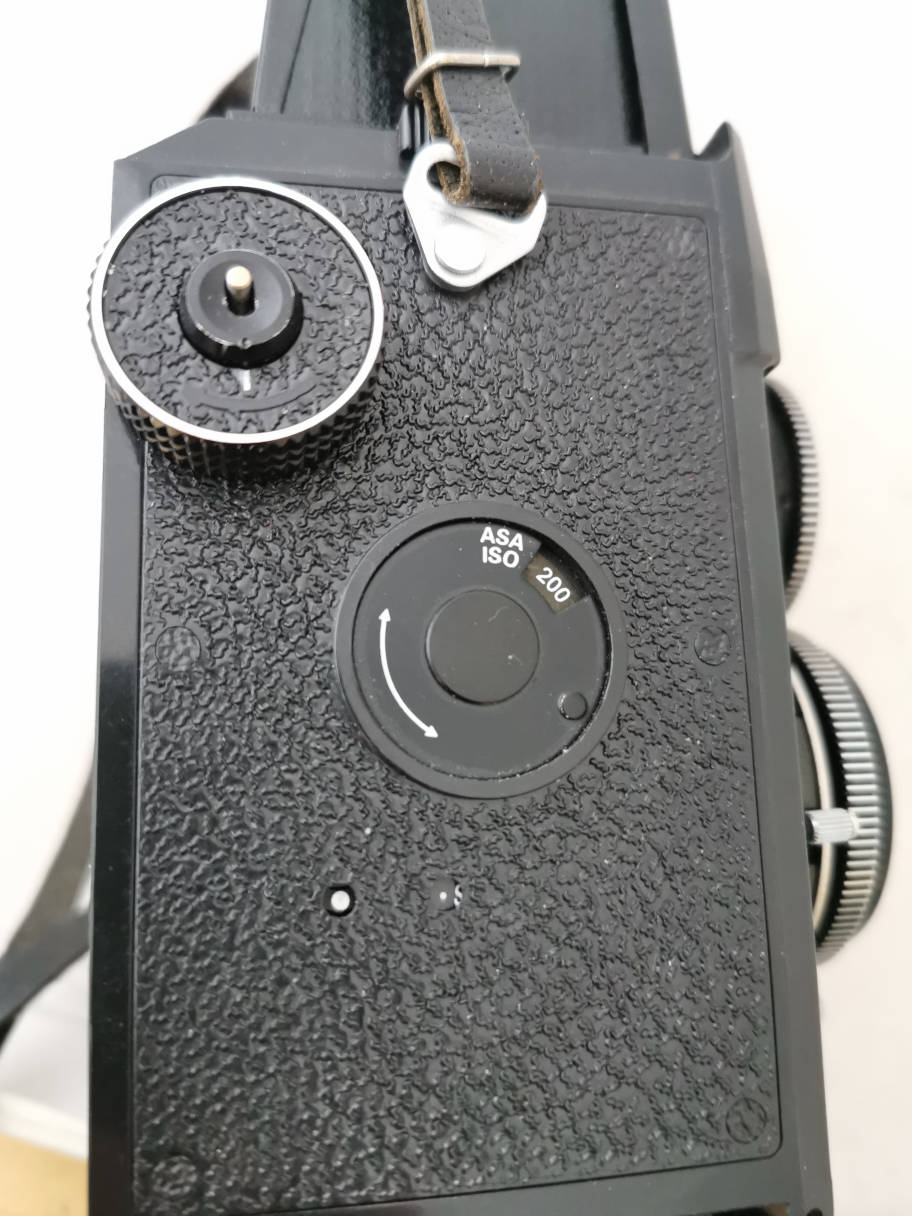
If
you want to rewind the film, the film advance knob has to be
disengaged. There is a little pin in the center of the wind knob that
can be shifted off-center. To re-engage the knob, turn it until the
white mark meets the tiny nick in the core and shift the pin back to
the center. Originally there was a tiny white dot that has worn off.
The second counter window shows the indicator dot.
The
camera is very light and very small. Handling is easy an logic. To put
a film, turn the knob at the top and open the back. There is one
peg to retract for the film wind spool and the wind knob retracts as well.
Put the film supply spool into its
compartment at the bottom, there is the rewind to retract. Engage the paper leader into the winding spool.
Wind until the paper is well engaged. Close
the back, open the red window and wind until number 1 appears. Open the viewer,
set speed and aperture, focus via the sccreen, compose your photo and
take your picture. Wind to the next. When all 12 or 16 photos are taken, wind
on a few turns, open the back and pry the spool out of its chamber.
The
camera lacks slow speeds, but there is a B setting. Picture quality is
very good. I have bought my camera second hand for a really small sum.
I would not pay the full price of 400€, if I had some money to spend, I
would prefer and old camera with automatic film advance, a more
luminous lens and slow speeds. On the other hand the Lomography camera
is a new camera and comes with a warranty.
Some
gereral words about Lomography and their service: There is a 2-year
warranty, at least in Europe. My personal experience with their service
is very good. As most of their cameras are made of (cheap) plastic,
there is no repair, they just exchange your defective camera. You have
to send it in to their Vienna office at your expenses, which is not cheap
if you are not based in Austria, but they try to compensate by adding
film or so to the return. You absolutely need a proof of purchase,
there was heavy abuse by fraudulent customers they told me. So if you
buy second hand or your camera is gift, be sure to put your hands on
the proof of purchase. After the 2-years warranty period it's over.
They will try to help for the expensive not-so-plastic cameras like the
LC series, but for the rest there is no repair. Keep this in mind for
the prices you pay for older gear.
In
any case: As the camera is very small and light for a TLR camera, it's
easy to carry. It is fun to use. The results are fine. The 35mm film
feature is a nice one, most cameras that can expose the sprockets are
simple plastic cameras, often with one speed and one or 2 apertures. If
you want to shoot 135 film in panoramic landscape mode, a TLR is
more complicated, as you have to hold the camera horizontaly and peek
into the finder from the side.
If
you just want the 35mm panoramas and you already own a 120 film camera,
be it an old folder or a SLR system, there is a cheap solution: get a 120 to 135 adapter.

















